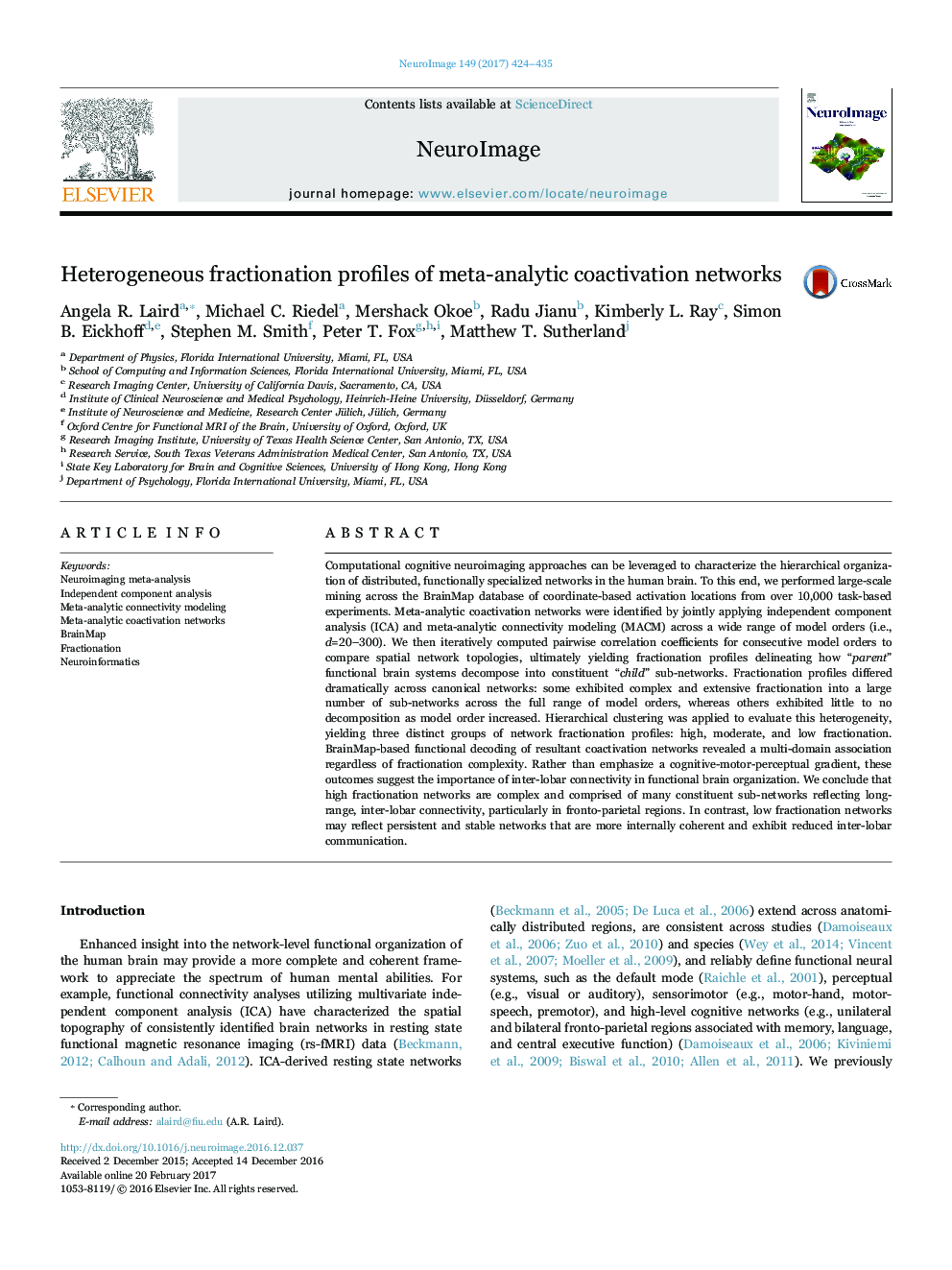| کد مقاله | کد نشریه | سال انتشار | مقاله انگلیسی | نسخه تمام متن |
|---|---|---|---|---|
| 5631264 | 1580861 | 2017 | 12 صفحه PDF | دانلود رایگان |
- Meta-analytic coactivation networks were generated via BrainMap database mining.
- Fractionation profiles reveal how “parent” networks decompose into “child” networks.
- 3 groups of network profiles were observed: high, moderate, and low fractionation.
- The results suggest the importance of inter-lobar connectivity in brain organization.
Computational cognitive neuroimaging approaches can be leveraged to characterize the hierarchical organization of distributed, functionally specialized networks in the human brain. To this end, we performed large-scale mining across the BrainMap database of coordinate-based activation locations from over 10,000 task-based experiments. Meta-analytic coactivation networks were identified by jointly applying independent component analysis (ICA) and meta-analytic connectivity modeling (MACM) across a wide range of model orders (i.e., d=20-300). We then iteratively computed pairwise correlation coefficients for consecutive model orders to compare spatial network topologies, ultimately yielding fractionation profiles delineating how “parent” functional brain systems decompose into constituent “child” sub-networks. Fractionation profiles differed dramatically across canonical networks: some exhibited complex and extensive fractionation into a large number of sub-networks across the full range of model orders, whereas others exhibited little to no decomposition as model order increased. Hierarchical clustering was applied to evaluate this heterogeneity, yielding three distinct groups of network fractionation profiles: high, moderate, and low fractionation. BrainMap-based functional decoding of resultant coactivation networks revealed a multi-domain association regardless of fractionation complexity. Rather than emphasize a cognitive-motor-perceptual gradient, these outcomes suggest the importance of inter-lobar connectivity in functional brain organization. We conclude that high fractionation networks are complex and comprised of many constituent sub-networks reflecting long-range, inter-lobar connectivity, particularly in fronto-parietal regions. In contrast, low fractionation networks may reflect persistent and stable networks that are more internally coherent and exhibit reduced inter-lobar communication.
Journal: NeuroImage - Volume 149, 1 April 2017, Pages 424-435
